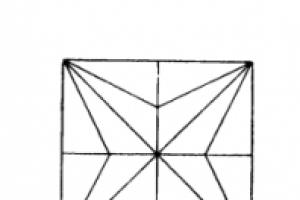Every woodworking master will agree that an electric planer is a useful, and often completely irreplaceable, thing in a home workshop. With this manual machine Any wooden workpiece can be processed very efficiently, and most importantly – quickly.
One more an indispensable tool A thicknesser is used for processing various wooden parts. The cost of such equipment is now quite high, so it usually makes sense to buy it only if the craftsman will earn something from processing wood blanks. If such a machine is not used for the purpose of earning money, but only to perform various works around the house, then the optimal solution would be to make a surface planer from an electric planer. It is quite possible to do such work even with your own hands. At the same time, the quality of the work performed when using such a homemade machine will remain at a fairly high level.
Necessary equipment
To make a surface planer from an electric planer with your own hands, you need to have:
- an electric planer, which it wouldn’t be a shame to convert into another tool;
- drawings of future equipment;
- plywood and blocks for assembling the equipment body;
- a small amount of free time.
First of all, when converting an electric planer into a surface planer with your own hands, you should determine exactly what size parts will be created on the new machine. The dimensions of the thicknesser being created will directly depend on their dimensions: this equipment must have a body of the same width and height, as well as the length of the pin and guides, which will exactly match the workpiece.
Correct installation of studs and guides

Working on a homemade machine
Also quite a lot important point is the position of the pin, using which it will be possible to raise and lower the tool during operation. Many self-taught people make this pin so that it is located exactly in the middle of the body. But this solution is completely wrong: when making such a machine with your own hands, it is recommended to place the pin exactly in the middle between the rear and front handles. In such a case, not only will there be more convenient work with a tool, but fixing it in the desired position is much more reliable, and it will be much easier to do it.
When converting an electric planer into a manual surface planer with your own hands, its pin must be made as movable as possible. To this end, in top cover a rolling bearing is installed on the new machine. In addition, a nut is installed on the middle plate, which is responsible for setting the height of the machine. In this case, the height of all equipment can be adjusted, if necessary, in small increments and with fairly high accuracy.
The guides of a new machine for the workpieces processed on it can easily be made from ordinary bars, but a small margin of length should be provided so that they are not exactly the same as the length of the workpiece. wooden part, but a little larger.
In addition, it is important to design the lower plane in such a way that during the processing of the part it moves immediately parallel to the machine knives. If this plane begins under the electric planer, during the work it will be very difficult to achieve maximum precision in processing the part.
Safe work on a homemade machine
Having converted such a hand-held power tool into a surface planer with your own hands, you should also remember about safety while using it. To get the job done on a new one home machine as efficiently as possible and completely eliminate the possibility of getting certain injuries, you should adhere to the following rules when performing certain work:
- When processing any part, it is necessary to use eye protection;
- When working with rough material, gloves should be used;
- When starting work on a homemade machine, you should check the functionality and reliable fixation of all its parts;
- the pins and knives of the machine must not have any cracks or any other defects;
- Only clean workpieces that do not contain nails or any other metal particles can be processed on a homemade machine.
How to work on a homemade machine

Thicknesser based on an electric planer
Working with a self-made surface planer is extremely simple. The machine pin is installed at the required distance from the edge of the part, set right size, the block is fixed. After this, the machine tilts slightly away from itself, as a result of which the cutting part of the pin is exposed. Then all that remains is to pull the tool towards you.
Thus, if there is an unused or outdated electric planer in the house, even with your own hands you can easily convert it into a full-fledged thickness planer, which will provide ample opportunity in the creation and processing of any wooden parts.
If properly executed, such a home-made machine will be almost in no way inferior in functionality to the simplest factory models of this type of electrical equipment for a home workshop.
How to make a surface planer with your own hands from an electric planer?
Many people ask: how to make a thickness planer from an electric planer with your own hands? Those who want to simplify and automate their work in the construction industry as much as possible do not need to spend a lot of money every time buying a new tool in the store. You just need to be patient, attentive, hardworking and boldly create necessary tools with his own hand. There is nothing impossible in producing a surface planer from an electric planer.

By making a thickness planer out of an electric planer, you will greatly simplify and automate your work.
However, before you start work, you need to understand what a surface planer is. This tool is mainly used to make precise, correct lines on any surface. Having a surface planer will speed up the construction process many times over, help you avoid many mistakes and make the work more accurate. It is a complete substitute for a pencil and ruler. If the latest devices often allowed for the possibility of the appearance of such defects as different thicknesses of the marked lines, their unevenness, and abruptness, then a homemade surface planer, due to the presence of a sharp pin or blade in it, is 100% accurate.

Scheme of a thickness planer.
In order to make such a tool, you should first become familiar with it. components: clamps, rod, pin or blade, pads. Thanks to this composition, the tool easily copes with creating straight lines: the block moves along the rod, the distance from the studs to the block is measured, and the screw clamp securely fixes the tool. Thanks to the measurement scale on the rod, the thicknesser can be easily adjusted to the size you need.
In order to make such a tool from an electric planer, you will need following materials and tools:
- electric plane;
- sheet plywood, as well as wooden blocks.
Preparation for tool making
In order to start making it, you must decide what size parts you will work with in the future. This is a very important point. Based on this, you will know what thicknesser you need to make.
It is important not to make a mistake here, since according to the size of the parts with which you will use the thicknesser, you need to adjust the width of the tool body, the length of the guide parts, the dimensions of the pin and its length, and the height of the side walls of the device.

To make a surface planer from an electric planer you will need plywood, blocks and a plane.
All this is necessary to ensure that the tool you make is stable on the surfaces with which it will work.
Also, before you make a thicknesser with your own hands, you need to know exactly how to place the pin. It will cause the electric planer to go down and up, so it is incorrect to install it in the center of the body. The pin must be installed so that its location is determined by the middle between the rear and front handles. Otherwise, it will be uncomfortable for you to work with the tool, and it will not be able to be firmly fixed.
When making this device, care should be taken to ensure that its pin is as movable as possible. In order to do this, it is necessary to place a rolling bearing in the upper part of the cover. A nut should be welded in the middle plate. Then your surface planer will have the ability to adjust the height of the mechanism with a fairly small step size.
In order to save on material, guides can easily be made from wooden blocks. Their length should be generous so that they are not end to end. Designing the bottom plane is a very important point. When working with a thicknesser, it is necessary that the material moves parallel to the blades, otherwise the evenness of the line can be questioned.
Return to contents
How to make a surface planer from an electric planer: instructions

Scheme of a planer planer.
You need to install your plane on a simple device in the form of a block, clamp it with clamps and set a certain gap. The gap should be of a thickness that matches the thickness of the workpiece being processed.
A support beam is attached to a workbench or a convenient surface for you; by selecting layers of plywood, we set the gap you need and attach the plane to such a base using a clamp. The entire installation is fixed using 4 clamps. Two of them hold the base itself on the workbench, and two hold the plane, which is set to a given thickness and raised under the base.
Return to contents
How to use a thickness planer using an electric planer?
It is necessary to set the gap between the electric planer and the bottom plate to the lowest possible height, while turning the pin. As soon as the height is set, you need to turn on the device and run the desired material under the plane blades. If the design is carried out correctly, we get an even, completely smooth part. There is no need to put too much pressure on the part, as the plane may fail. Making a surface planer from an electric planer is a completely simple and easy task that will bring high-quality results.
Making a surface planer from an electric planer with your own hands
- Preparing to work - setting up and using the tool
If you have a certain amount of technical knowledge, making a thickness planer from an electric planer with your own hands does not present any particular difficulties.

Scheme of a planer planer.
The electric planer is a useful household device - it allows you to process wood very quickly and efficiently. However, any tool becomes unusable over time, and electric planers are no exception in this regard. An electric planer that has become unusable over time can be given a second life by using it to make a surface planer.
Thicknesser is an indispensable device for wood processing work. Cost of thicknesser manufactured industrial producers, is quite high, and the purchase of such expensive equipment is not always justified. The easiest way to make such a device is from an electric planer. If everything is done correctly, then the quality of wood processing operations performed using such a tool will be quite high.
Before you start constructing a surface planer, you should thoroughly study the principles of operation and purpose of the device.
Design and purpose of a surface planer
This tool is designed to make precise and correct lines on any plane.
Using a surface planer allows you to speed up the process several times. construction work, while the tool will avoid the assumption large quantity errors and will make the construction process more accurate. This unit is a full-fledged substitute for a pencil and ruler. When using a pencil and a ruler, drawing lines is somewhat difficult, since very often the line can have different thicknesses, can be broken or uneven. All these defects lead to inaccuracies that can affect the quality of work. A homemade thicknesser, thanks to the presence of a sharp pin in its design, allows you to get rid of such difficulties.

Scheme of a thickness planer.
The design of the tool includes the following components:
- clamps;
- barbell; pin or blade;
- pads.
Thanks to this design, the device easily copes with the task of creating straight lines on any surface. During the operation, the block moves along the rod and allows you to measure the distance from the pin to the block. The use of a special screw clamp allows for reliable fixation of the tool. Thanks to the presence of a measurement scale printed on the rod, it is easy to reconfigure the tool to the size required during work.
To make a surface planer with your own hands from an electric planer, you will need to prepare:
- electric plane;
- wooden blocks and sheet plywood for assembling the device body.
In addition, the master who decides to construct a device must have a set of basic knowledge in the field of physics and mechanics.
Return to contents
Preparing for the fixture manufacturing process
Before you begin manufacturing the device, you should decide on the dimensions of the parts to be processed. This nuance is of great importance, since it affects the size of the thicknesser that is planned to be manufactured.
When determining the dimensions of the workpieces with which you plan to work, it is very important not to make a mistake, since this parameter of the parts affects the width of the device, the length of the guides, the size of the stud and the height of the walls of the unit.

Homemade thickness planer.
All these requirements must be met in order for the manufactured tool to have high stability on the surfaces with which it is to be worked. In addition, before making a homemade surface planer. you need to know exactly how to position the pin. This structural element causes the electric plane to rise and fall; for this reason, it is not recommended to mount the pin in the center of the body. The pin should be mounted so that it is midway between the rear and front handles. If the pin is positioned differently, working with the device will be inconvenient, and the device will not be able to be securely and firmly fixed.
When manufacturing the device, care must be taken to ensure that the pin is provided with maximum mobility. For these purposes, a rolling bearing is placed in the upper part of the cover. A nut is welded into the middle plate. It is with this design that it becomes possible to adjust the height of the location of the working element of the structure with a small step size.
The guides are made using wooden blocks. The length of these bars should have some margin. Designing the work plane is an important aspect of the tool manufacturing process. When using the device, it is necessary to ensure that the workpiece moves parallel to the blades, otherwise the evenness of the applied line will be questionable.
Return to contents
How is a thickness planer made from an electric planer?
It is necessary to fix the plane on simple adaptation in the form of a block of wood (using clamps) and establish a certain gap. The gap to be set must be the same size as the thickness of the workpiece being processed.

A support beam is fixed to a workbench or other convenient platform, a gap is installed on it using a selection of layers of plywood, and a plane is attached. Attaching the tool to such a base is done using clamps. To secure the installation you will need four clamps. Two of the clamps hold the base to the surface of the workbench, and two are used to hold the plane, which is set to the specified thickness and raised above the base.
For more accurate operations, a millimeter scale is applied to the stud. For this purpose, it is most convenient to use a file or needle file. After completing the assembly of the surface planer, it needs to be painted with paint for metal surfaces, which eliminates the appearance of fungus and the development of corrosion processes. Only the lower plane of the tool, with the help of which the work process is carried out, should not be painted.
By making a surface planer from an electric planer and using it in your work, you can apply markings of any complexity to the plane.
Return to contents
Preparing for work - setting up and using the tool
Before using the tool, it should be prepared for use. The quality of the work depends on the correct preparation of the device. The effectiveness of the device and the safety of working with it also depend on the correct setting. The operating principle of the tool is based on the sliding of a bar with a pin inside the block, which is equipped with a special mechanism to hold the bar in the desired position.

Assembling a thickness planer from an electric planer.
To obtain a uniform and clear line, the pin must be well sharpened. The sharpness of the sharpening pin should be checked before each use of the device and, if necessary, sharpening.
Working with the tool is simple. To perform operations, the pin is installed at the required distance from the block. The process of installing the stud at the required distance is carried out using a steel ruler, after which the bar is fixed. The block is pressed tightly against the workpiece, and the tool is slightly tilted away from the master. By tilting, the cutting part of the pin is opened. After tilting the tool, it moves along the plane towards the master working with the tool.
During operations with the tool, care should be taken to avoid injury.
The operating rules and safe operation of the device are as follows:
- When using the tool, you should wear eye protection;
- when working with rough materials, you should use protective gloves;
- Before turning on the device, you should check that the instrument is configured correctly;
- Before work, the stud should be checked for cracks.
In addition, before using the device, you should prepare the workpieces; to do this, you need to clean their surface from dirt, nails and debris that could damage the working element.
Homemade thickness planer from an electric planer
For processing wooden products can use a special thicknesser made from an electric planer, made independently and intended for finishing wood blanks. To make a surface planer with your own hands, you can use an electric planer, which has been used for quite a lot of work. long time, but retained all its performance characteristics.

Thicknesser from an electric planer
Design of thickness planer
The thickness planer includes:
- horizontal work table for processing wooden products;
- working processing shaft;
- pressure rollers for feeding the workpiece into the processing zone;
- table height adjustment system;
- a safety device that prevents the return of the workpiece.

Thicknesser from electric planer
Thicknessing machines are manufactured at industrial enterprises and are used in production where finishing of the surface of wooden workpieces is required.
The use of a thicknesser significantly reduces the processing time of workpieces, but if the selling price of the machine is quite high and one-time operations are performed, it is better to make the unit yourself with your own hands. Using an electric planer, which has been in use for quite a long time, you can make a thickness planer on which you can process various products with sufficiently high quality and accuracy.
In order to make a surface planer from an electric planer with your own hands, you need the following units and components:
The principle of operation of the machine is to carry out the operation of processing a wooden workpiece, fixed with clamps and fed into the area of the working shaft of the plane.
Manufacturing of the machine
To manufacture a thicknessing machine, several operations are carried out during which the work is performed:
- The base for the desktop is made of plywood (10-15 mm), 400x500 mm in size.
- The stands for the platform with the electric planer are being fixed. Plywood is used to make stands. The structure is assembled using screws and fixed to the base, followed by installation of an electric planer.
- A platform is cut out for mounting the electric planer. A plane is attached to the platform, taking into account a special hole cut exactly in the center, matching the size of the plane. For fastening, special strips are used, which are fixed with screws.
- Threaded screws with gears are mounted on the platform. A special mechanism is installed to raise and lower the platform. 4 screws are mounted at the corners of the base.
- The platform is mounted on ready-made stands and, together with the electric planer, is secured with screws. Electrical wiring is laid to power the plane, taking into account the possibility of preventing damage to the wiring when processing workpieces.
- The platform control handle with an electric planer is being installed.
- A bar with a scale and a special pointer are installed. A measuring bar is necessary for accurately measuring workpieces and maintaining specified dimensions.
After completing the assembly of the thickness planer, testing and adjustment are carried out. After work, the electric planer must undergo cleaning and lubrication of working parts.
Planing diagram Drawing of the operation of a thickness planer based on a planer
Features of manufacturing a thicknesser
Initially, before manufacturing a surface planer, a drawing of the machine is made indicating the exact dimensions of all parts.
The dimensions of the machine’s structural elements are precisely established, which must be made, observing:
- width of guides;
- length of guides;
- hairpin length,
determining the dimensions of the processed workpieces.
The installation of the pin is marked, which should be located between the two handles exactly in the middle, which ensures ease of operation on the machine. To displace the pin, a bearing is mounted in the upper part of the housing cover, and a nut is welded to the plate to adjust the height of the workpiece.
It is also necessary to take into account that the length of the guides made from bars must be greater than the base. This ensures parallel flow of the workpiece during processing relative to the knives of the electric planer.
You may also be interested in the following articles:
DIY thicknesser machine How to make planer woodworking with your own hands How to make a homemade four-sided machine Homemade machine for the production of lining
Do you want to expand the functionality of your electric planer? Assemble your own surface planer!
Before we begin to consider making a surface planer with our own hands, let's find out what it is and what it is needed for.
Reismus called a woodworking machine, which minimal losses material, planes the timber to a given thickness.
It is important to distinguish a planer from a planer, since the workpiece must be planed before planing.
A planer removes uneven wood and makes the surface smooth, and a thickness planer is designed for finishing and is used to obtain the exact dimensions of a beam or board.
In this regard, you need to understand that through a thickness planer you will be running a pre-prepared timber to obtain the appropriate dimensions, and not a piece of wood without any preliminary processing.
Let's look at the device of a do-it-yourself surface planer.
- What components does this include?
- The most important thing is an electric planer. the choice of which must be approached with all seriousness, depending on the tasks at hand.
- Some regular plywood, the thickness of which depends on the design you choose.
- A handful of screws for attaching to the base assembled from a 60x200x1000 board
- And two slats as guides.
The simplest design that can be assembled in 30-40 minutes now.
An example of how you can make a surface planer from a plane and available materials is shown in the photo.


Fast, simple and affordable. If you are not looking for great accuracy, then this option is quite suitable for you.
This video explains in detail how to do this.
Since the number of parts for making a surface planer is not so large and they do not have any intricate shape, there is no point in making drawings. While you are drawing them, your neighbor, having watched this video, will already assemble a surface planer.
Another example of how you can assemble a surface planer from an electric planer with your own hands.
True, in this case you will have to spend much more time on production and will require you to have a jigsaw, 10 mm thick plywood, M10x1.5 pins for making the adjusting screw, self-tapping screws and patience.
But the final part will be more accurate, it will be easier to adjust the equipment to the required size, and it will be more pleasant to work, though wide board can no longer be processed. In any case, it's up to you, it all depends on what you need this moment. And one more example that is not difficult to do. True, the maximum possible dimensions of the workpiece on this machine are limited to a height of 100 mm and a width of 110 mm.
And one more option. Which one to choose is a matter of taste and depends on availability suitable materials, time and desire.
If none of the options I suggested suit you, you need large volumes of wood processing, or you simply don’t want to do it yourself, think about purchasing a stationary thickness planer.
They sent me a link to a video with a homemade surface planer, I couldn’t resist, I posted it on the website. Enough simple design and very practical. There is a nuance in the precise manufacturing of frames, but if you try, you can do everything accurately and beautifully. This thicknesser can also be easily converted into milling machine, which is important in our time of crisis. Watch, try, do!
At home, you can make your own thicknesser or jointer from an electric planer. They will make working with wooden blanks easier and faster. Using homemade machines, it will be possible to plan and adjust the thickness of lumber, as well as perform surface finishing and some other operations. The simplest option is to use an electric plane, which can be attached to the machine bed upside down. For such models, conversion to thicknesser or jointer machines is provided for by their design. In other cases you will need to do special fastenings for reliable fixation of the tool in working position.
A thickness planer is a woodworking equipment that is used to plan smooth planes of lumber until the desired thickness of the workpieces is achieved. In this case, only pre-prepared (coated) boards or beams are processed.
Preparation of materials and working tools
There are quite a lot of different options for creating structures that allow you to convert an electric planer into thicknessing equipment. To make a relatively simple homemade machine at home, you will need the following tools and materials:
- screwdriver with a set of bits;
- carpenter's square or corner;
- tape measure or simple ruler;
- screwdrivers with different tips;
- spanners;
- electric plane;
- jigsaw or hand saw for wood;
- plywood with a sheet thickness of 1.5 cm;
- long screws with coarse threads (4 pieces);
- bicycle chain and four drive sprockets for it;
- wooden blocks (2.5 by 2.5 cm) and planks (1.5 × 1.5 cm);
- nuts with M14 thread;
- washers of suitable sizes;
- screws 25 by 100 mm.
The electric planer will serve as the main mechanism created machine. The screws can be replaced with wood screws of similar sizes.
Manufacturing algorithm
Drawings and diagrams will help to simplify the process of creating a thicknessing tool from an electric planer, but it is easier to do it from photographs. The equipment is manufactured in the following sequence.
The created structure is installed on a flat surface. To fix it to a workbench or table, you will need to use suitable fasteners.

The presence of a drive mechanism makes it possible to set the required thickness of the workpieces being processed.
When assembling the machine with your own hands, you should fix the cable supplying the power tool so that it does not interfere with operation, and the wire is not accidentally damaged. To securely fix the electric planer itself on the work site, it is recommended to use bolts and nuts.
Measuring ruler is a must structural element created homemade surface planer. With its help, the thickness of the lumber that is planned to be processed is determined. A piece of plastic, wooden or metal ruler 8 cm long is suitable as a bar. You can also make a pointer arrow from similar materials.
Assembling a jointing machine based on a jigsaw
A jointer is designed to remove existing irregularities from the surface of wood. The work process is one-sided planing of lumber on a plane. You can also shoot under different angles chamfers. Thanks to processing on this equipment, beams or boards become smooth.
The design of the jointing unit is simpler than that of its thicknesser counterpart. This allows you to assemble the installation yourself using available materials.
The procedure for making a jointer
To make a planing machine for processing workpieces Not large sizes, you will need an electric plane that can be fixed in a stationary position. The basis of the created unit can be fragment of plywood, MDF or chipboard. A piece measuring 50 by 35 cm is sufficient. The thickness of the used sheet material should be more than 2 cm.
Assemble the jointing tool by performing the steps in the following sequence:
- cut out the base for the machine from the existing sheet material;
- a stop for the workpiece is attached to it using self-tapping screws or screws at an angle strictly of ninety degrees (a square is used to set it);

- install ribs that will ensure rigidity of the stop;
- An electric plane is attached to the base using M8 bolts and nuts.
Before fixing the stop, a hole is cut out in it for the pipe and for cooling the electric motor of the tool.
If it is necessary to plan large workpieces, then it is enough to increase the size of the created unit. This will result in a design as in the photographs below.

In addition to the considered option from an electric planer, jointing equipment can be assembled in another design. Practical implementation similar designs depend on the available home handyman materials and creativity at hand. How to make homemade jointing units of other designs is shown in the following videos:
Making a stand for an electric planer
When working with an electric planer constantly, it is recommended to have a special stand that is suitable for storing it and installing the tool on it immediately after turning it off.
The use of such a device is especially important when working with powerful, heavy electric planes.
The need for a special stand is due to the fact that the metal drum with blades does not stop immediately after disconnecting the supply voltage from the instrument’s electric motor, but after a while (about 6 seconds). Throughout this period he was still moves by inertia. The inertial duration of rotation itself depends on the massiveness of the drum and the power of the equipment used. At the same time, you cannot place a power tool with the sole on a table or workbench, because you can not only damage their surfaces, but also get injured.

To avoid holding the instrument in your hands the whole time the drum stops, you need to use a stand of a special design. The main element is a groove approximately 8 cm wide and 0.6 cm deep. It is necessary for the drum to rotate freely until it stops completely. The accuracy of the position of an electric plane placed on a stand (when the blades are above the cut groove) is ensured by the presence of a front stop made of a strip.
The width of the groove and the distance from its front edge to the stop are determined by the dimensions of the power tool model used in the work.
Required tools and materials
To make a stand yourself, you will need the following tools:
- an electric jigsaw equipped with a file for cutting out shapes;
- screwdriver with a set of bits;
- drill with metal drills 3 and 4 mm in diameter;
- awl;
- hand saw for wood with fine teeth;
- ruler or tape measure;
- square;
- pencil or marker;
- spherical wood cutter;
- sandpaper;
- chisel (enough with a 3-4 centimeter tip width).
To create the structure you will need the following materials:
- a piece of board up to 1 m long, 20 mm thick and 140 mm wide;
- wood screws – 2 pieces 4 by 45 mm;
- wooden plank 30 mm wide, 20 mm thick, and 140 mm long;
- 4 self-tapping screws with large heads 4 by 15 mm.

Creation sequence
When making a stand for an electric plane, the following algorithm is used:
- Cut a fragment 50 cm long from the board with a saw or jigsaw.
- According to the diagram given above, mark the plank with the board.
- Drill holes for screws (according to the marks made at the required points) for fixing the stop.
- Try on the model of the electric plane being used to the prepared workpiece of the base of the stand, noting the future placement of the groove based on the location of the tool drum.
- According to the markings, cut a groove with a file, making it approximately 4 cm larger, how this parameter at the drum slot. Notches are made along the edges and in the center.
- Use a chisel to remove wood from the groove and clean it.
- Use a jigsaw to saw off the excess from the workpiece.
- The front stop is secured with screws. 4 self-tapping screws are screwed along the edges, which will serve as the “legs” of the stand.
- The made stand is sanded with sandpaper to remove roughness.
The position of the stand is adjusted using self-tapping screws.
Having finished the work, you should make sure that the groove is made of the required width and depth: to do this, simply place the power tool on top of the stand and look from the side at the location of the drum. If necessary, you will need to deepen or widen the groove.
After turning off (while the drum is still rotating), the instrument is placed in the following way:
- First, the front edge of the plane sole is supported;
- Only then lower the power tool onto the stand.
No need to make a stand special costs time, labor and Money. But this device makes the job easier.
Thicknessers and jointers made independently from an electric planer are much cheaper than their factory-made counterparts, but their functionality is inferior to branded equipment. However, they are quite sufficient to perform the basic operations for which these devices are intended. The practical use of homemade machines significantly speeds up wood processing, improves its accuracy and quality compared to manual application electric planer.
Let's start with the basics, for those who don't know what a surface planer is - it's a tool for working with wood, namely planing a flat plane with a given thickness relative to the second one, originally planed flat surface. They can be equaled uneven surface specific material to be cut. This surface planer, which you can make with your own hands, has an electric planer as its main component and serves as a mechanism for planing lumber.
How to make a surface planer with your own hands?
For this we will need the following materials and tools:
Materials:
- a sheet of plywood with a thickness of at least 15mm
-wood planks and beams with dimensions: 15×15 and 25×25;
- drive sprockets - 4 pcs.;
- a chain from a bicycle;
- washers of different sizes;
- screws for 25-100-105 pcs;
- nuts with M14 thread;
- long threaded screws;
- "spots" for screws 4 pcs. so that they are not pressed in during operation
Tools:
- jigsaw;
- electric planer, which is used in construction and carpentry;
- screwdrivers and wrenches of different sizes;
- a corner and a regular ruler;
- screwdriver.
We use an electric planer as the main mechanism for the planer.
Instructions for making a surface planer from an electric planer with your own hands in a home workshop
Carefully look at the diagrams, photos, drawings for creating a thickness planer from an electric planer in step by step instructions and you will succeed.
1 . Let's take plywood as a basis.

As I already wrote, we take a sheet of plywood at least 15mm thick, cut it in the form of a rectangle 500mm long and 400mm wide.
2 . Then we attach the stand for the electric planer.

The stands for the surface planer will be made from the same piece of plywood. These parts will be divided from several elements that we will assemble on the spot. We fasten everything from the back to the base with screws, and here we will install an electric planer with a working platform.
3 . The next stage: we will make platforms for the electric planer.

The electric planer is mounted on an individual platform, which has an opening in the center. We cut the hole with a jigsaw exactly in the shape of the electric plane. We secure the electrical appliance using clamps and screws.
4 . We assemble threaded screws with sprockets for the platform.

We assemble the drive mechanism onto the platform base; it will guarantee the lowering and raising of the platform itself for the surface planer. We install screws with large threads at all four corners of the base (where an electric planer is pre-installed on the screws) thanks to them we will set the thickness of the processed lumber

We make stands from plywood on which we will install the upper part of the planer with a platform and a fixed plane. We fasten all this with screws. We think in advance where and how to lay the cable from the electric planer; it is important that the coating of the wire is not damaged during work
6 . Then we install the handle, we will use it to control the surface planer.

The handle for adjusting the platform is installed on one of the long threaded screws. We fasten everything with a set of washers and nuts. To prevent the electric planer from falling off its mounts, we do through hole on one of the screws, thanks to this we will securely tighten the fastening nut.
7 . The final stage work installation of the measuring bar and indicator (arrow-pointer)

The measuring bar must be present on the surface planer; it is irreplaceable; we use it to measure the thickness of the material we are working on. A piece (6-8 cm) of an ordinary plastic ruler will do just fine as a bar. The most common arrow made of tin is suitable as an indicator for a thickness planer.
That's all, the thicknesser made at home with your own hands is ready, now it needs to be tested on any the right material, while simultaneously tuning it. Like any electrical appliance, the thicknesser needs periodic maintenance (clean or sharpen the blade).
Let your homemade surface planer with an electric plane serve for a long time and not break.
Another device that is available in the workshop of Alexey Kuznetsov. These are additions to a regular electric planer that turn it into a machine.
The first addition is a jointer for planing the edges of boards. This is in addition to the above. A stand is attached to the side of the workbench with a pair of bolts, on which a stop for the plane is also secured with a bolt. Closer to us in the frame there is an adjustment screw that allows you to adjust the vertical tilt of the plane sole.
The handle of the tool is placed on this stop and secured on top with a clamp. In this case, the handle itself rests on the adjustment bolt. By unscrewing it, we tilt the sole towards the table, and by twisting it, we tilt it on the contrary. 
Another photo from a different angle. 
But during operation, shortcomings were identified. The cut wanders and long workpieces cannot be processed smoothly. Therefore, the mount will be redone (Alexey promised to post the results).
The second extension was the surface planer (a device for planing panels of calibrated thickness). In this way you can process a shield of any length and width. The guide rails are fixed to the table using clamps, thereby setting the width of the surface to be processed. If the shield is longer than the carriage travel, it’s okay. First, it is processed as long as there is enough movement along the length, then the shield is simply moved forward, the shield is fixed and processed further.

The thickness adjustment is made using calibrated strips of 1, 2, 5 mm, which are placed between the plane mount and the carriage or directly under the shield, depending on the thickness of the shield.
In principle, the design is clear from the photo: there are two even bars - guides along which the carriage rolls back and forth. 
The carriage itself, in turn, also consists of a pair of parallel guides on which the cradle (I’ll call it that) with a plane fixed in it moves in the transverse direction. 
A thickness planer is a woodworking machine that planes with minimal loss of material. This machine is used for finishing and is also used for precise changes in material dimensions. Many people wonder how to make a homemade thickness planer from an electric planer? In order to make this tool, you first need to become familiar with its main parts: clamps, rod, pins, blade, block.
Thanks to these parts, it is easy to fix and adjust the tool to the size you need.
Materials you will need to create a homemade thickness planer:

Tools you will need:
- Electric planer.
- Various screwdrivers and wrenches.
- Ruler.
- Screwdriver.
Preparing to work on a surface planer:
- Select part size.
- Figure out how to place the stud.
- Make the pin movable.
- Start designing the bottom plane.
Step-by-step creation of a surface planer

This part too made from plywood, must be secured from behind using screws.
- Creation of a platform on which there will be an electric planer.
Use a jigsaw to make a hole in the shape of an electric plane.
- Assembling threaded screws for the platform.
All corners of the platform We install screws with large threads.

From a sheet of plywood we make a stand on which you will need to install the upper part of the machine with a platform and an electric plane, all this secure with screws. We are thinking about how and where to lay the cable from the electric planer.
- Attaching and installing a handle to control the surface planer. You need to install it on one of the threaded screws. You need to secure it with washers and nuts. To prevent the electric planer from falling off the mounts, we create a through hole on one of the screws.
- Installation of the bar and indicator.
The measuring bar on a thickness planer is considered an indispensable part, thanks to it you can measure the thickness of the material. Any piece of ruler from 6–8 cm will work as a bar. For the indicator can choose regular arrow made of tin. That's all, now our hand-made surface planer is ready.

Remember to test it on any material and always remember to care for this device, clean it and sharpen it on time. To do your job efficiently, It's worth checking out the drawings thicknesser and watch a video on how to make a thicknesser with your own hands.
Safety when working on a homemade machine
- When working on such a machine, eye protection is always required.
- Gloves should be worn during rough work.
- Before work, you should check the functionality of the machine and the fixation of all its parts.
- Hairpins and knives must be free of defects and various cracks.
- Only clean material that is free of nails and other metal particles can be processed on the machine.
Thicknesser from an electric planer




How to work on a homemade thickness planer:
- The machine pin is placed at the required distance from the edge of the part, the required size is set and the block is fixed. After these actions, the machine tilts away from itself and then the cutting part of the pin opens. Next, you just need to pull the tool towards you and that’s it.
- If you properly operate a surface planer made by yourself, the work will be done perfectly and will not differ from work in specialized workshops.
Studs and guides
About these details based on electric planer we need to talk separately. They play the most important role in the work of a surface planer.

Conclusion
It's not that hard to do this thicknesser miracle with your own hands. Numerous drawings and videos help in creating a surface planer. The main thing is to try and do everything according to the advice and instructions.
As gaining new experience and your needs, you can improve the machine or start using modern and very powerful machines.
If you need a thicknesser to create a large number of blanks with their subsequent sale, then you must understand that the usual homemade machine you won't be able to do it. And most importantly, don’t forget that you don’t have to be upset if you can’t make a thickness planer with your own hands! You can always buy it in the store.








